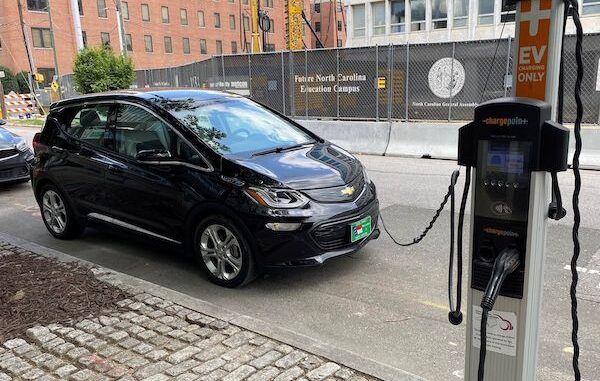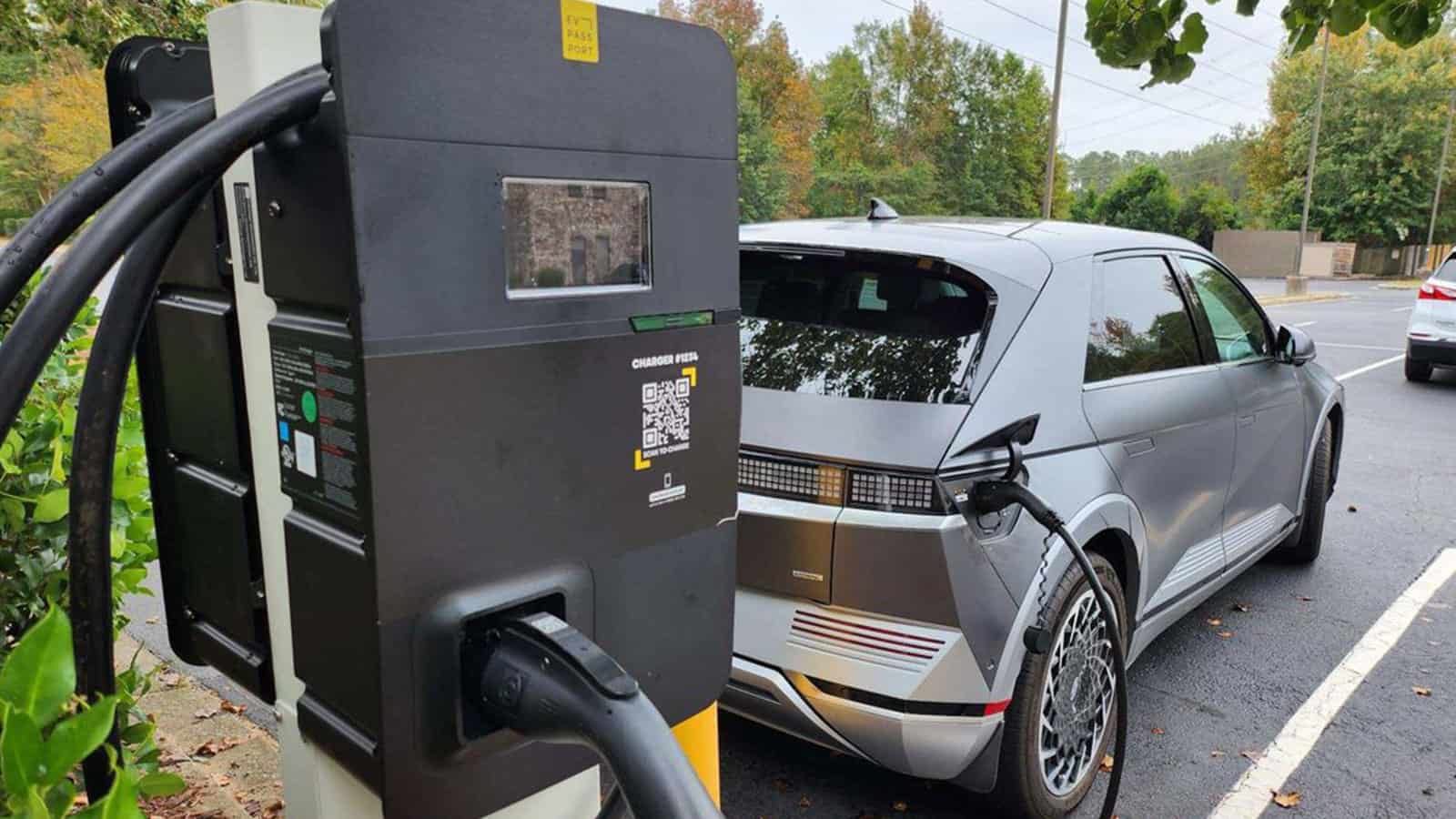What’s Driving the Growth of EV Infrastructure? Buy EV Charging news for Key Updates
What’s Driving the Growth of EV Infrastructure? Buy EV Charging news for Key Updates
Blog Article
Top EV Charging News: Secret Updates on Framework and Innovation

Current Innovations in Fast-Charging Technology

Additionally, advancements in battery innovation, consisting of enhanced thermal monitoring systems and higher energy thickness batteries, enhance fast-charging capabilities. These advancements minimize the risk of battery degradation during fast charging, making sure longevity and efficiency for EV proprietors.
In addition, the assimilation of smart charging services is boosting user experience, allowing real-time surveillance and vibrant pricing models. EV Charging news. This versatility enables vehicle drivers to optimize charging costs and times based on grid demand
As automakers remain to invest in fast-charging networks, the partnership in between market stakeholders is critical. Partnerships between billing terminal carriers and automotive manufacturers are paving the way for comprehensive protection, eventually promoting a much more robust EV environment. These improvements are essential in sustaining the shift to sustainable transportation.
Government Initiatives for Billing Development
Federal government efforts play an important function in the growth of electric vehicle (EV) charging framework, promoting the change to sustainable transportation. Various government and state programs are being carried out to improve charging accessibility, lower the economic problem on consumers, and advertise the fostering of electric vehicles.
Especially, the united state government has actually designated considerable financing with the Facilities Financial Investment and Jobs Act, which earmarks $7.5 billion for EV billing network advancement throughout the country. This funding is focused on deploying hundreds of new charging terminals, particularly in underserved locations, thus addressing array stress and anxiety amongst prospective EV buyers.
Furthermore, various states are establishing regulations to simplify the permitting procedure for charging terminal installations, which is critical for speeding up release. Rewards such as tax obligation credit scores and rebates for both customers and businesses are likewise being presented to motivate the installment of charging facilities.
In addition, public-private partnerships are progressively becoming a focus, leveraging personal financial investment to complement federal government financing. These initiatives highlight a joint approach necessary for constructing a reliable and extensive EV charging network, inevitably adding to a greener and more sustainable future.
Ingenious Battery Solutions Enhancing Performance
Changing the landscape of electrical car (EV) innovation, cutting-edge battery options are significantly improving effectiveness and efficiency. Breakthroughs in battery chemistry, particularly with lithium-sulfur and solid-state batteries, are leading to enhanced energy thickness, which permits longer arrays and faster billing times. These brand-new battery types have the prospective to outshine typical lithium-ion batteries by providing higher capabilities while minimizing weight, consequently boosting total lorry performance.
In addition, growths in battery monitoring systems (BMS) are maximizing power usage and prolonging battery lifespan. this Intelligent algorithms check battery wellness and efficiency, allowing real-time modifications to charging and discharging procedures. This not just improves the effectiveness of the battery but also ensures an extra sustainable and trustworthy energy resource for EVs.
Moreover, the combination of recycling modern technologies is resolving the ecological impact of battery manufacturing and disposal. Advancements in second-life applications for EV batteries are facilitating their use in power storage systems, adding to a round economic climate.
As these innovative battery options continue to evolve, they assure to transform the EV market, making electrical automobiles more appealing and obtainable to a wider target market while supporting global sustainability goals.

Partnership Between Automakers and Charging Networks
Acknowledging the important demand for a durable billing facilities, automakers are progressively working together with charging network suppliers to improve the EV ownership experience (EV Charging news). These partnerships aim to create a seamless billing ecological community that profits customers and sustains the shift to electric vehicles
Significant auto brand names are joining forces with established billing networks to increase their charging terminal insurance coverage, making certain drivers have accessibility to reputable and hassle-free billing choices. For instance, partnerships with networks like ChargePoint and Electrify America allow automakers to integrate billing options directly right into their automobiles' navigation systems, guiding individuals to the nearest stations and supplying real-time accessibility updates.
Moreover, these collaborations usually lead to the growth of fast-charging innovations that significantly minimize the time needed to reenergize an EV. By pooling sources and knowledge, car manufacturers and charging networks can introduce faster, producing remedies that meet the expanding need for electric wheelchair.
Furthermore, joint efforts may additionally result in even more standard charging procedures, which can alleviate consumer complication and advertise broader EV adoption. Generally, these strategic alliances are essential in constructing a efficient and easy to use charging infrastructure that satisfies the demands of an expanding electric automobile market.
Obstacles Facing EV Charging Facilities
As the electrical lorry market proceeds to grow, several difficulties are appearing that impede the development of a comprehensive charging infrastructure. One of the primary challenges is the inadequate number of charging stations, especially in underserved and country metropolitan locations. This space produces variety anxiousness amongst possible EV customers, hindering them from making the button.
In Recommended Site addition, the absence of standardization in billing innovation makes complex the facilities landscape. Variations in plug types and charging rates can develop complication for individuals and boost operational complexities for charging network drivers. The combination of charging terminals right into existing electrical grids positions significant challenges. Many areas deal with capacity limitations, calling for considerable investments in grid upgrades to accommodate raised need.
An additional pressing concern is the high expense associated with the installment and maintenance of billing stations, which can be an obstacle for both personal businesses and public entities. Ultimately, regulative difficulties and zoning limitations can postpone the implementation of billing facilities, restraining development in increasing necessary services. Dealing with these obstacles will certainly be important for cultivating a robust EV environment that sustains the transition to sustainable transport.
Conclusion
To conclude, the continuous innovations in EV billing technology, supported by significant government efforts and ingenious battery options, are critical for the expansion and efficiency of electric vehicle infrastructure. Collaborations between automakers and charging companies even more improve station protection, attending to the expanding demand for available charging options. Despite challenges that persist within the EV billing landscape, these growths indicate a favorable trajectory straight from the source towards a more reliable and lasting electric car community.
Innovations in billing framework have actually led to the advancement of ultra-fast chargers qualified of providing up to 350 kW of power, considerably decreasing billing times. Variants in plug types and charging rates can produce complication for individuals and boost functional complexities for charging network drivers.In final thought, the ongoing advancements in EV billing innovation, supported by substantial government campaigns and ingenious battery services, are crucial for the development and effectiveness of electrical automobile infrastructure. Cooperations between car manufacturers and charging providers better enhance terminal coverage, resolving the growing need for available billing options. Regardless of challenges that continue within the EV charging landscape, these advancements indicate a positive trajectory in the direction of a more effective and lasting electric car ecological community.
Report this page